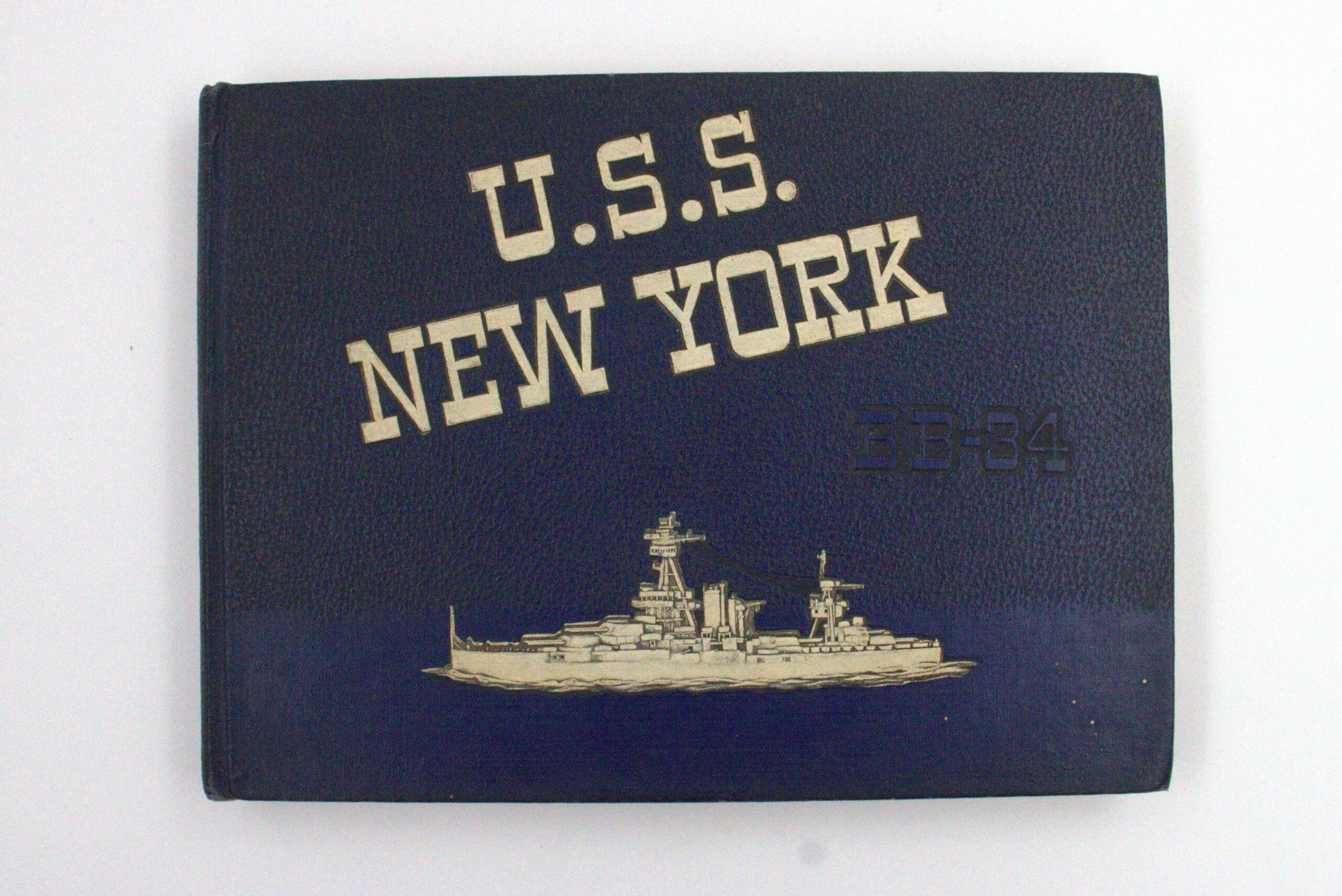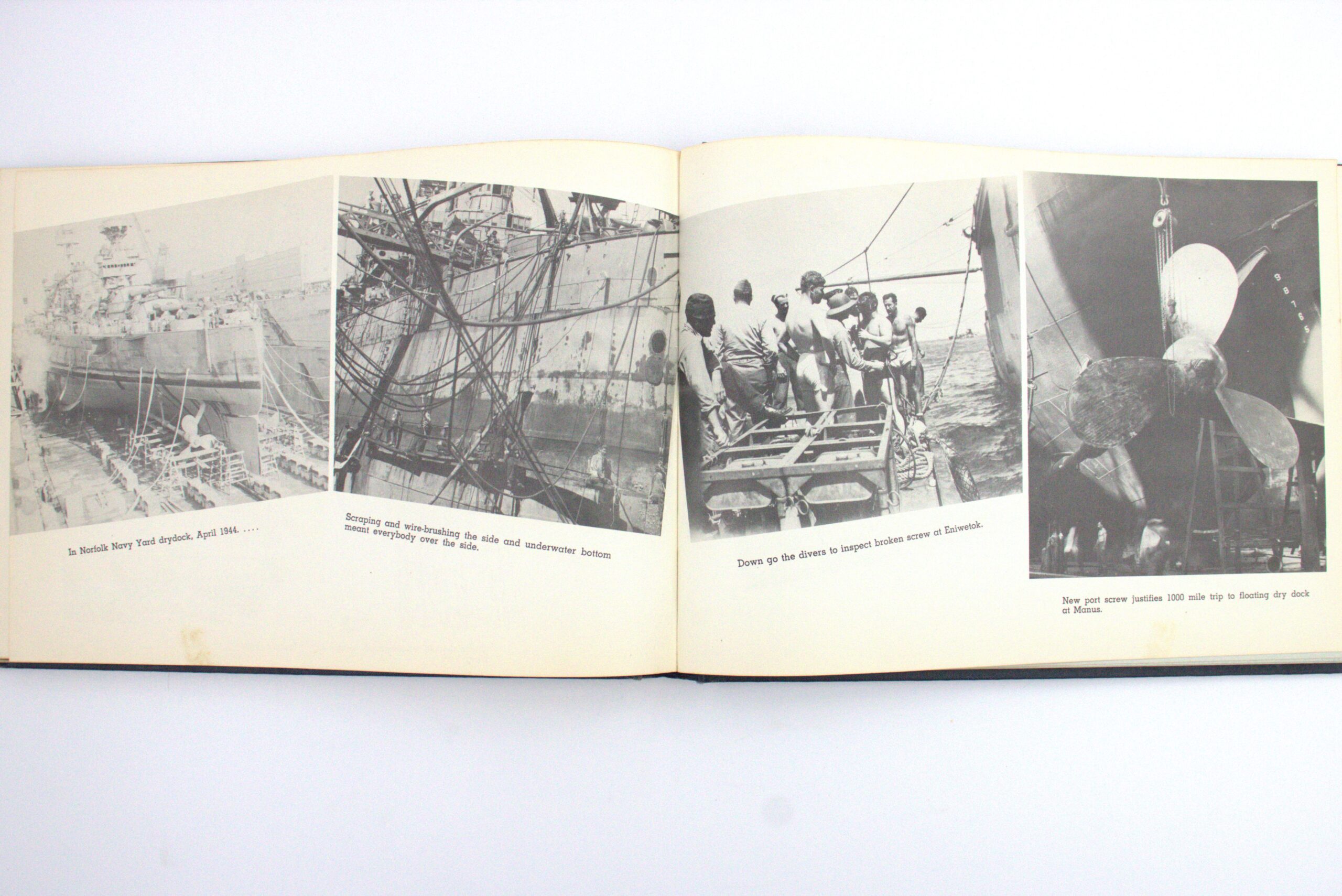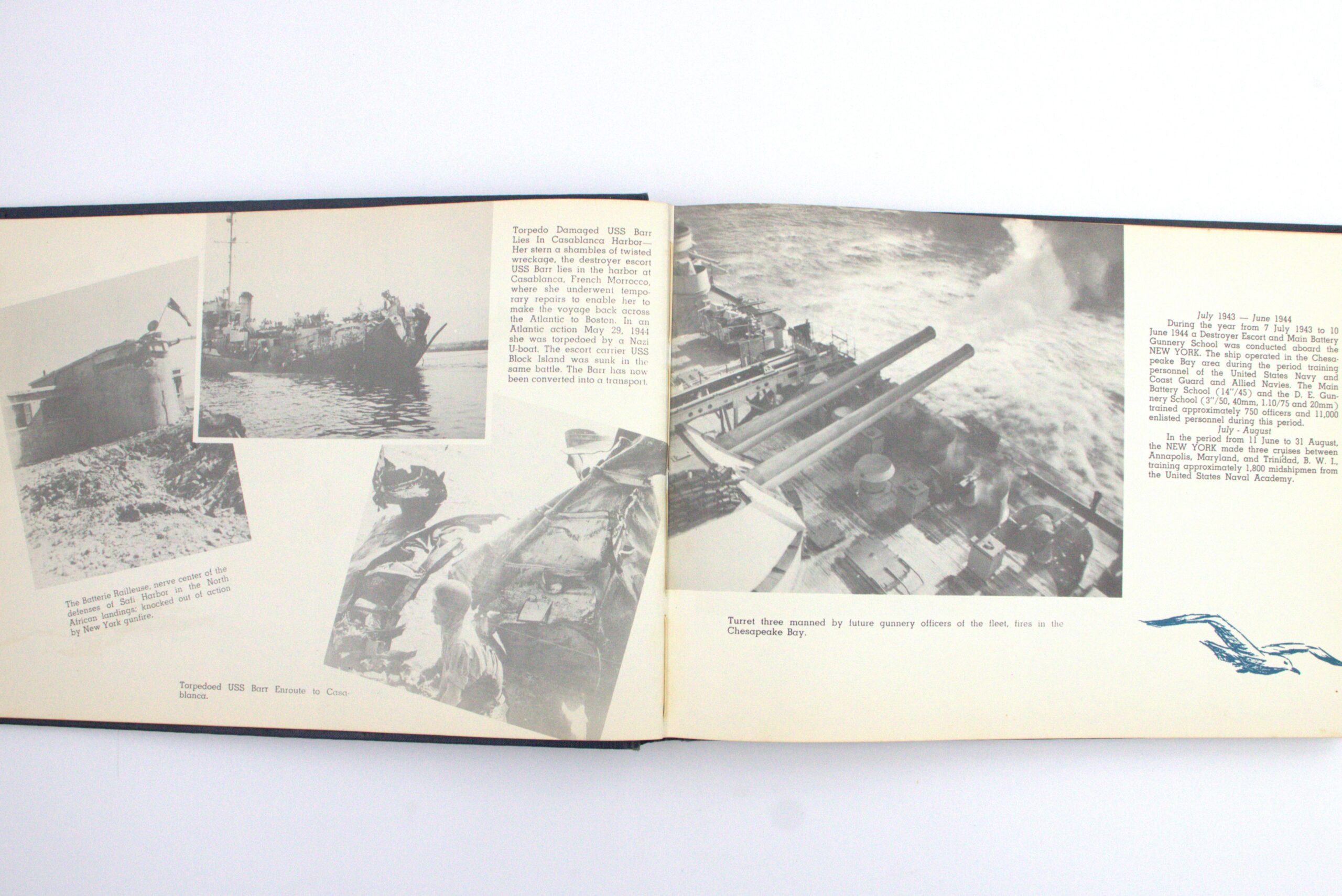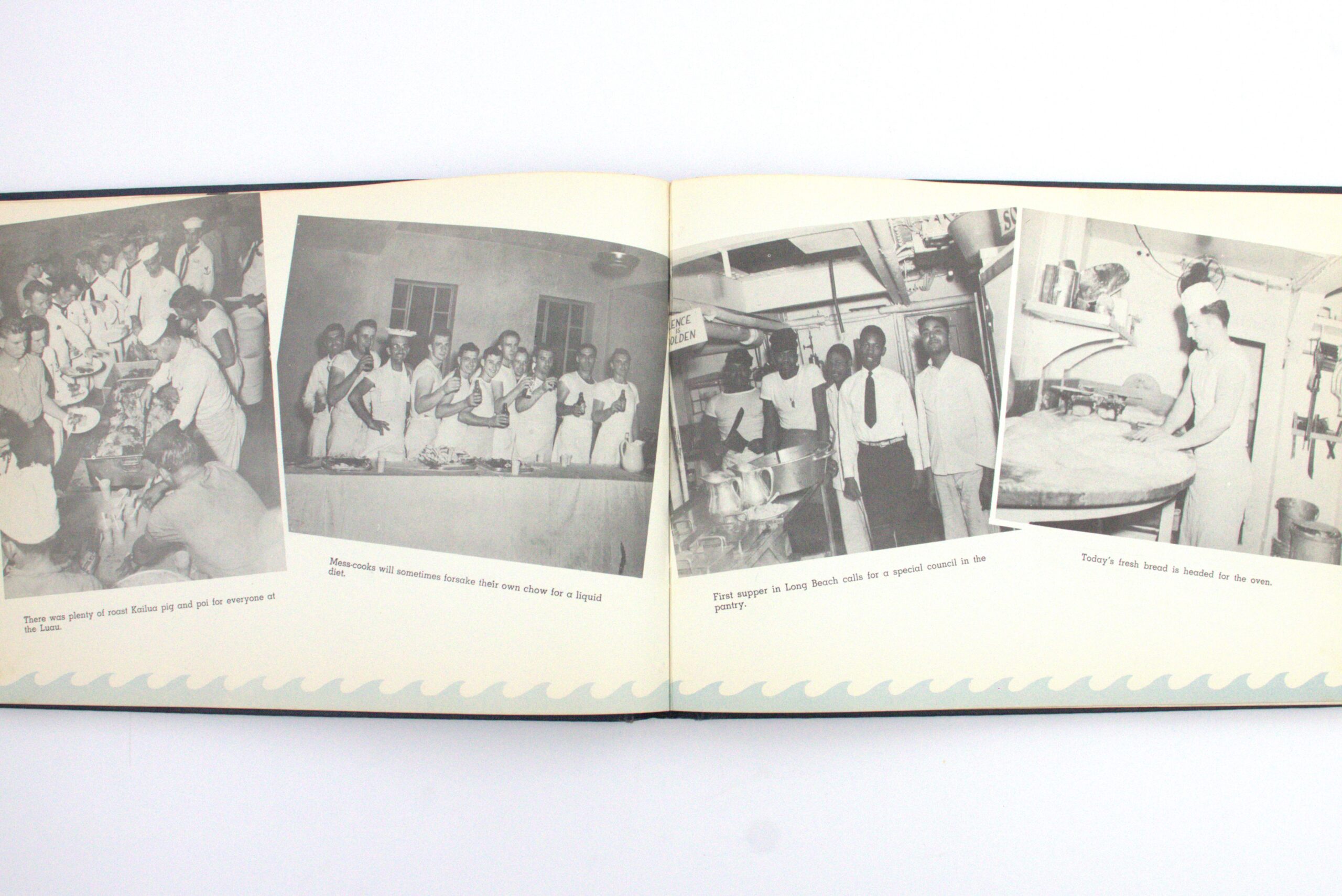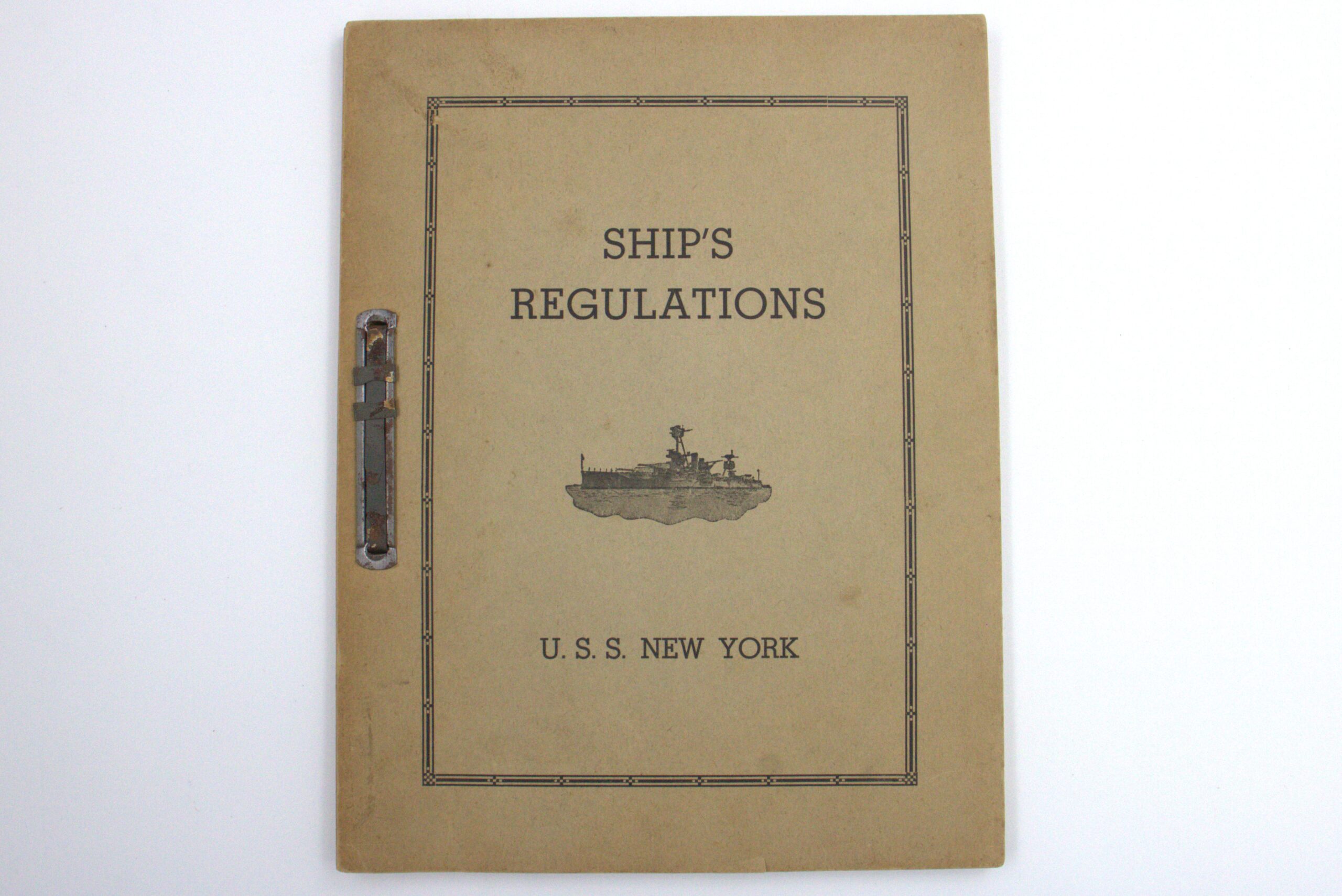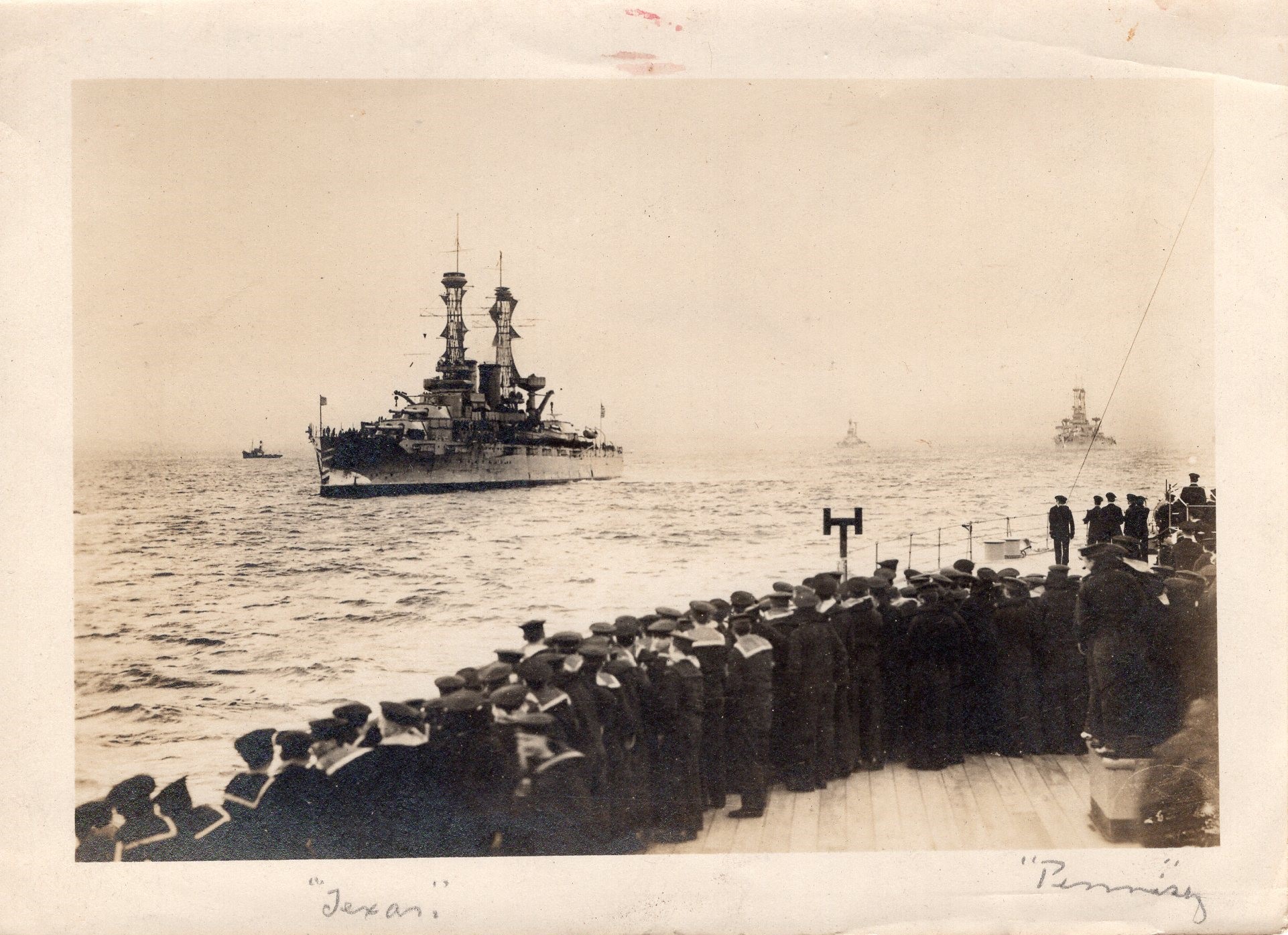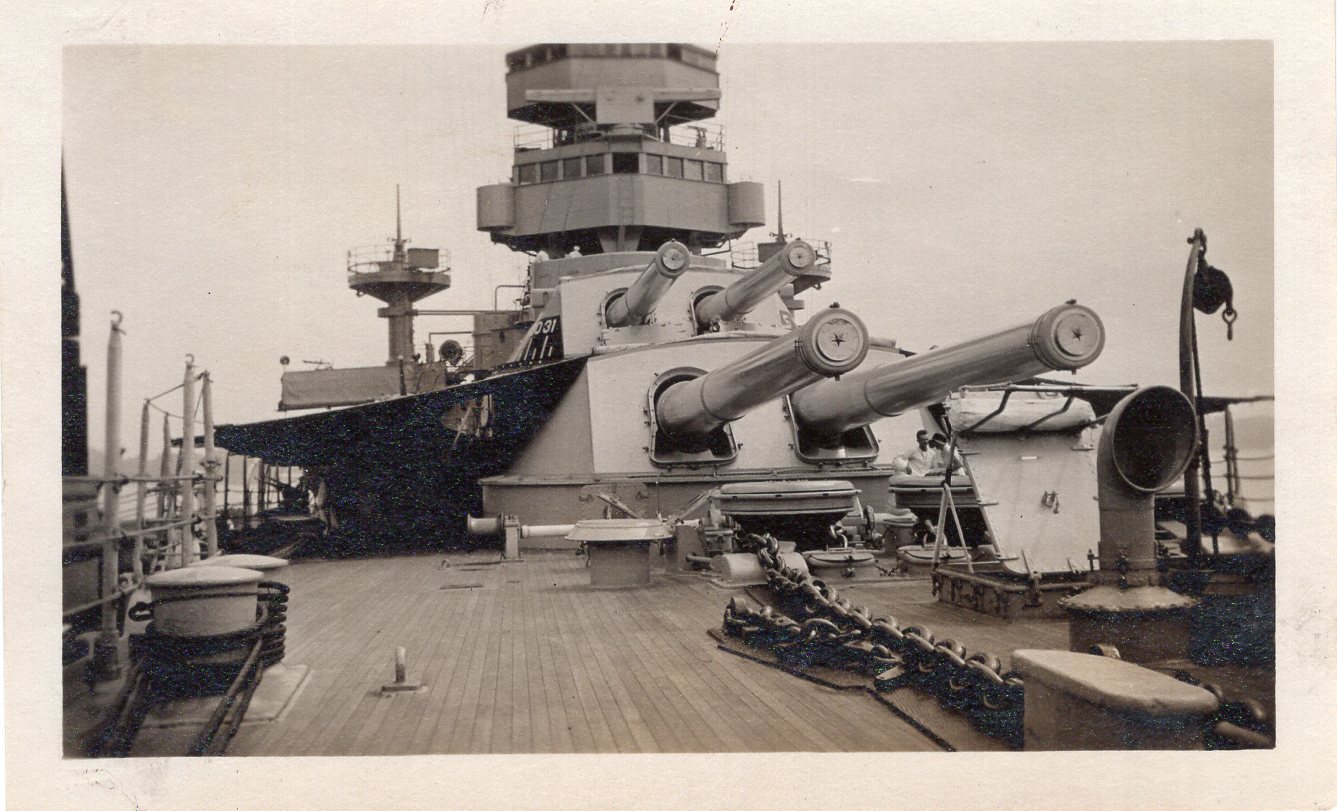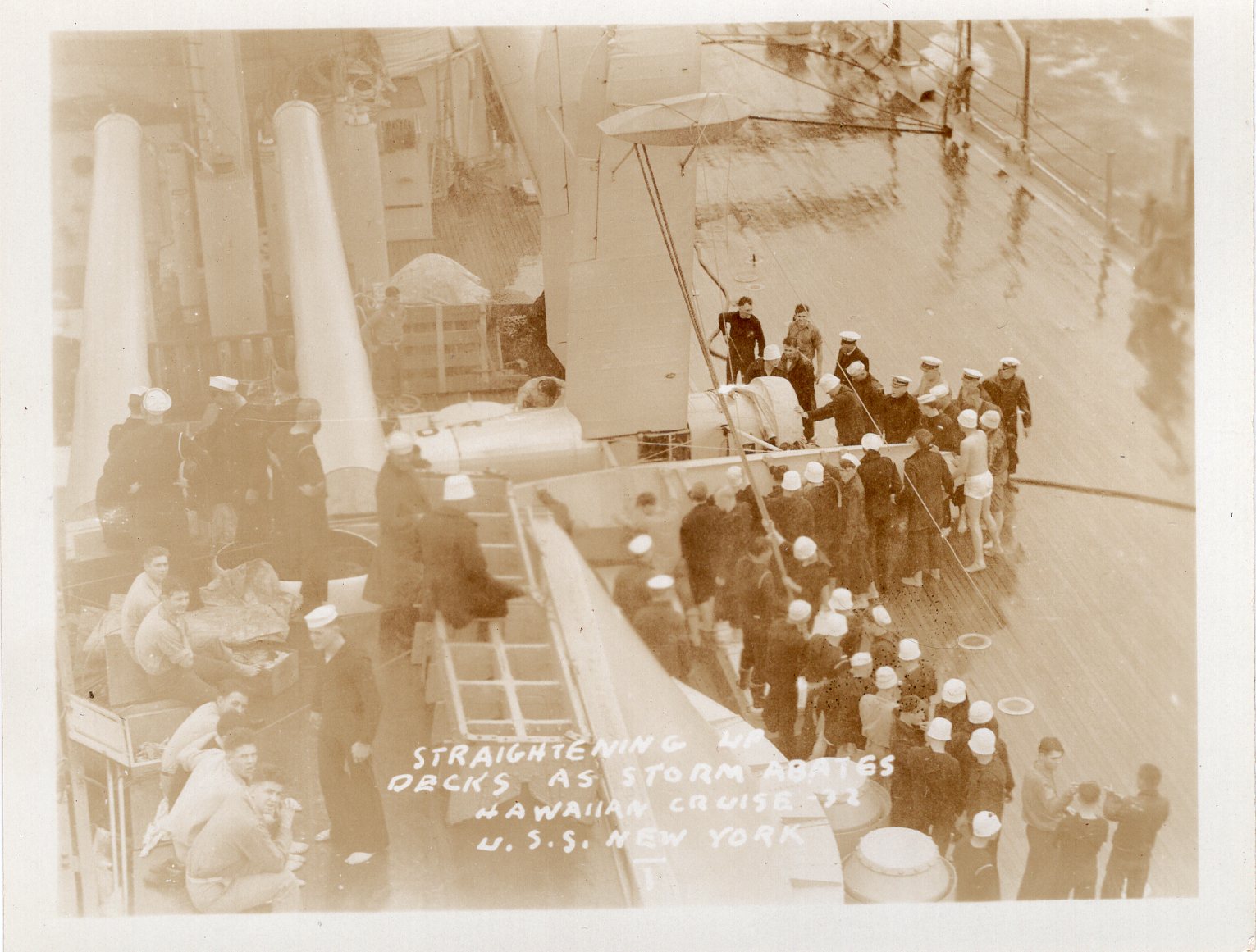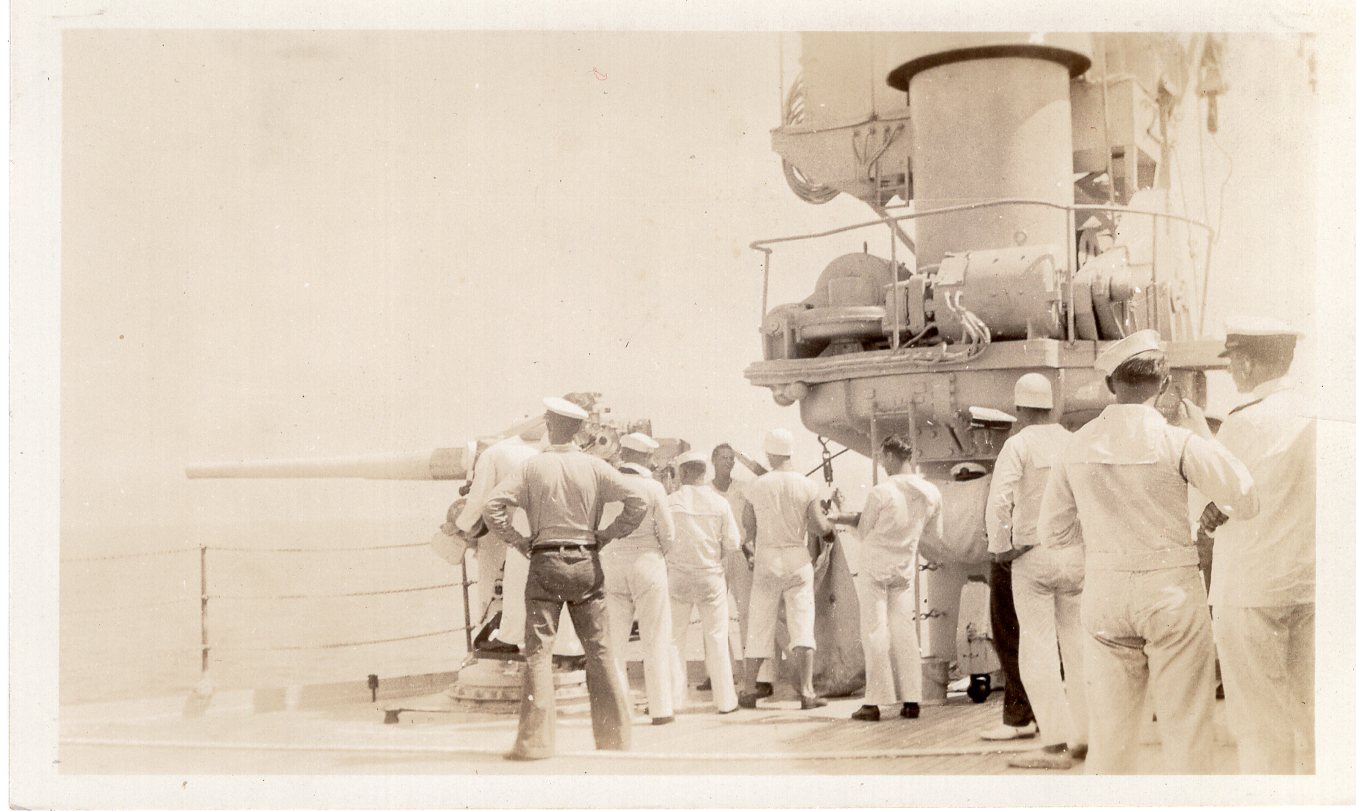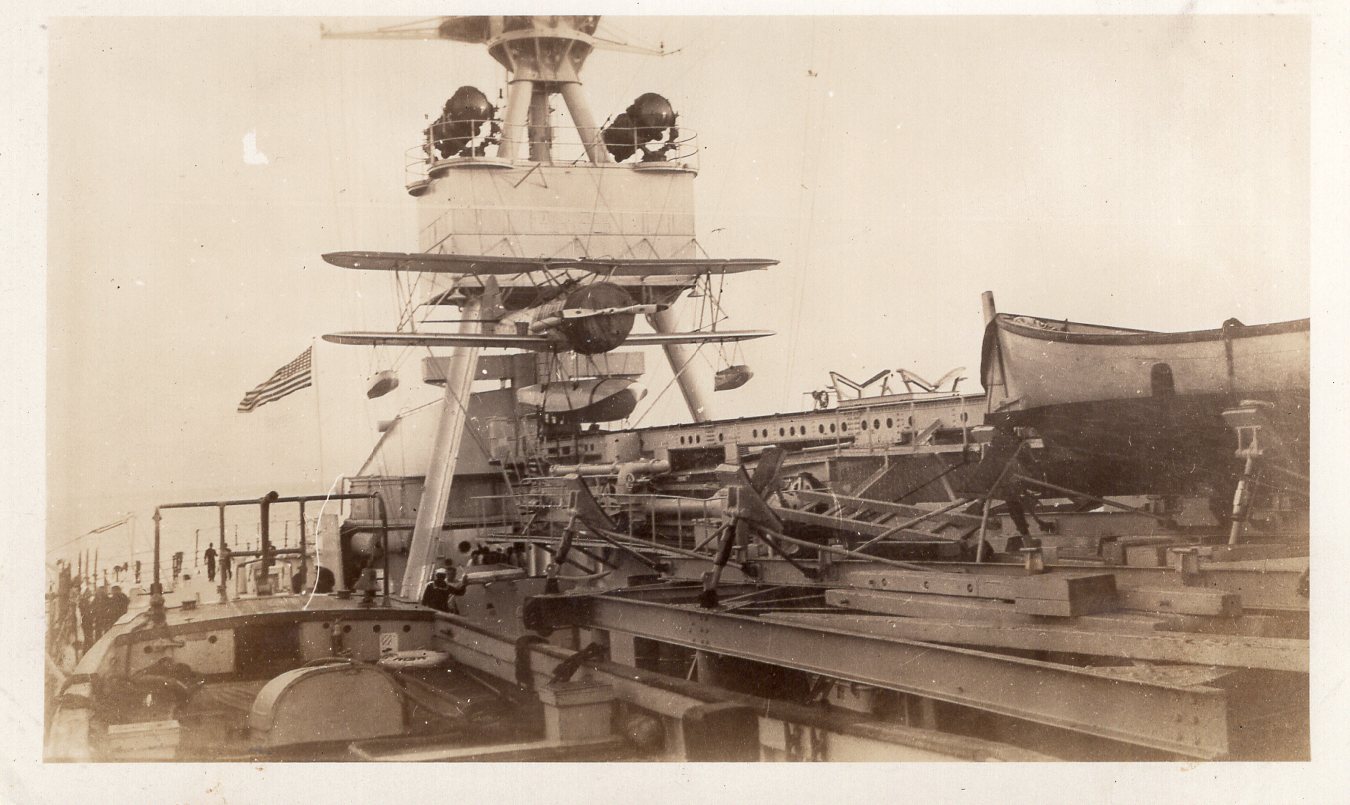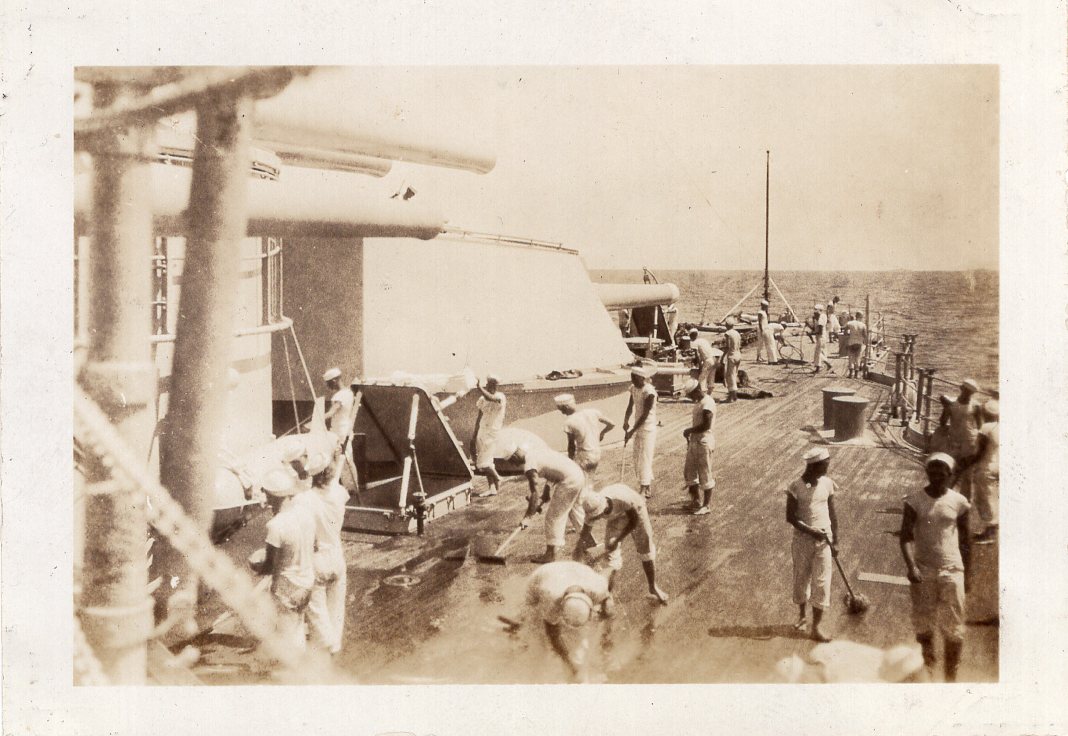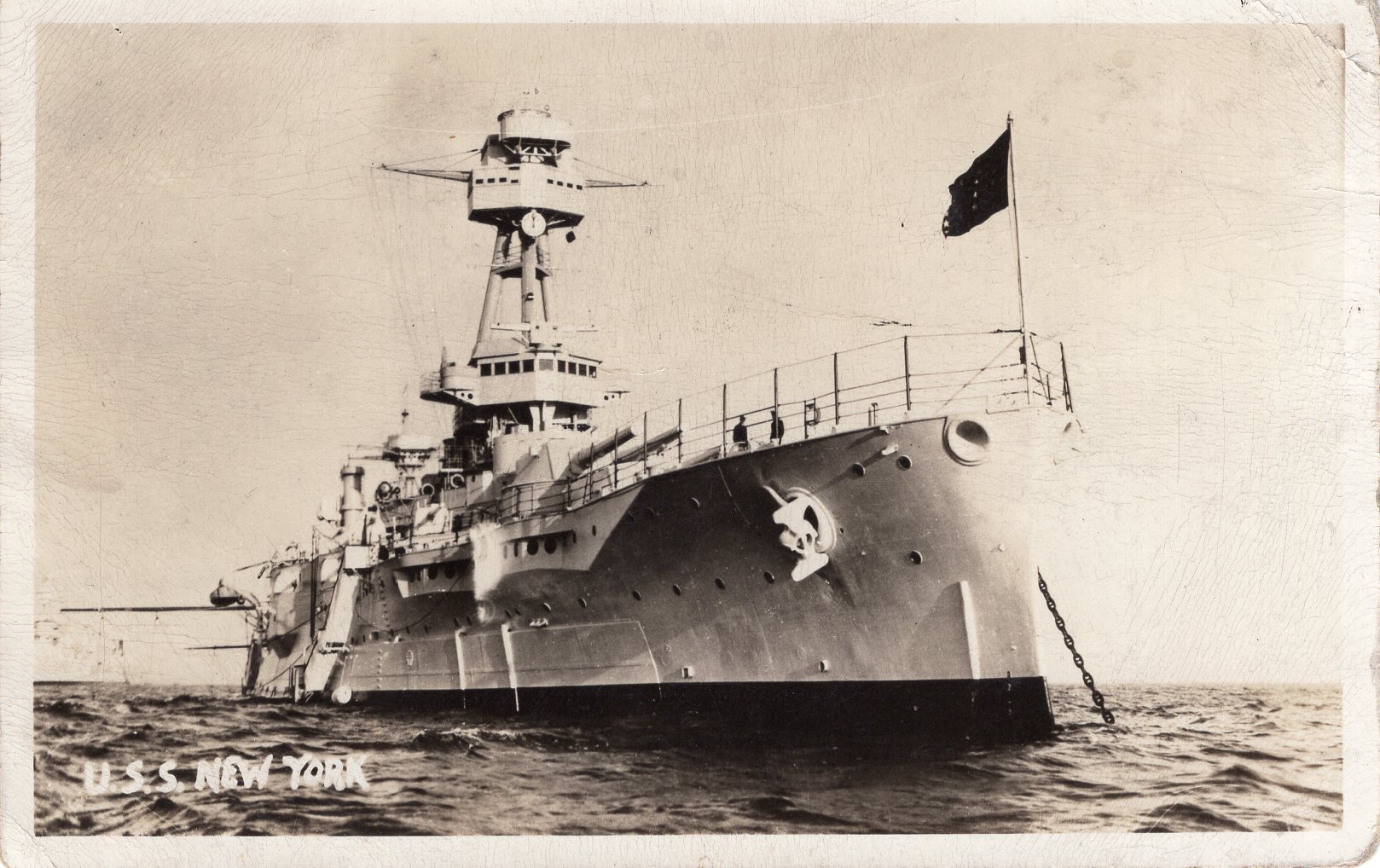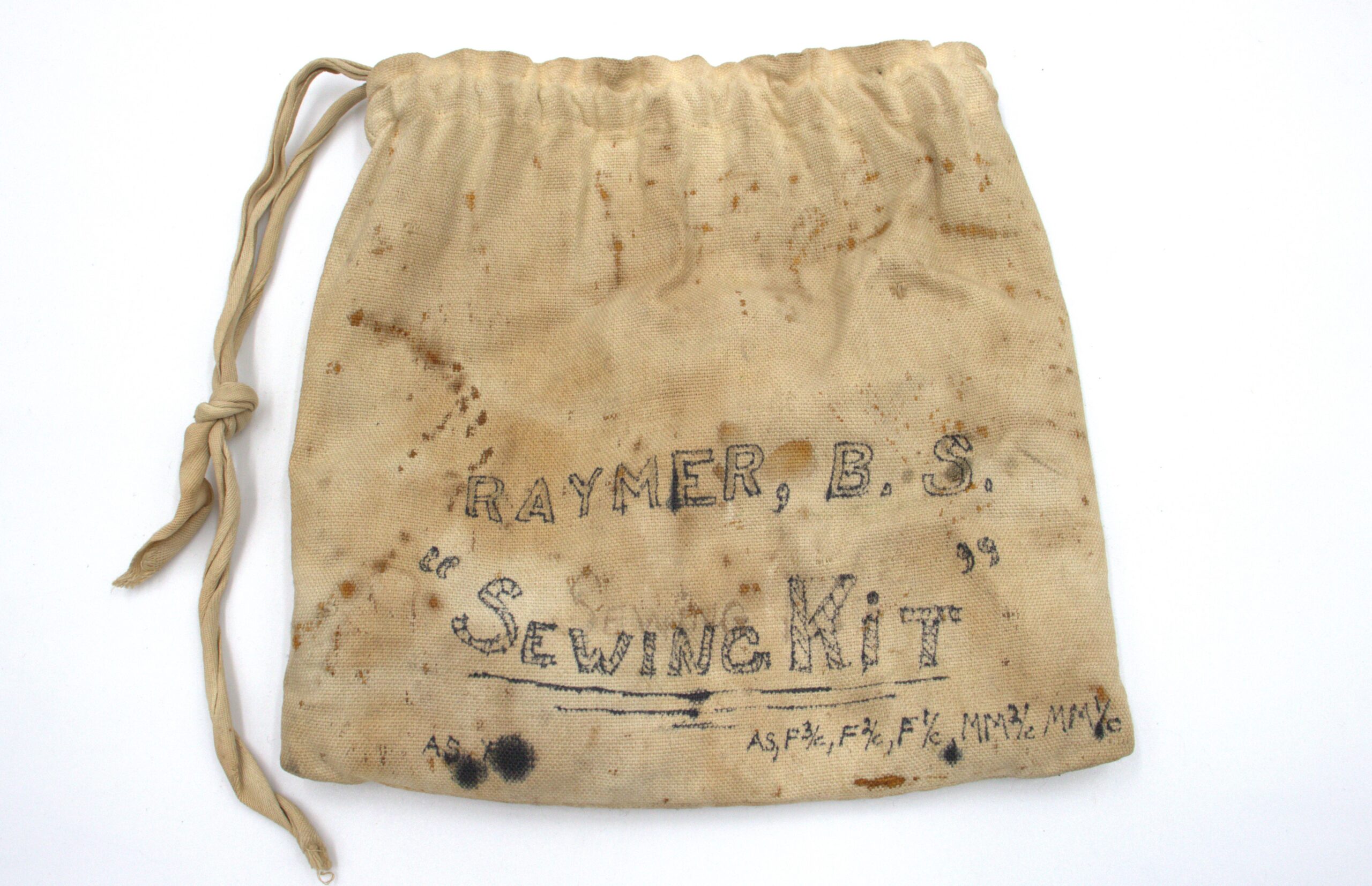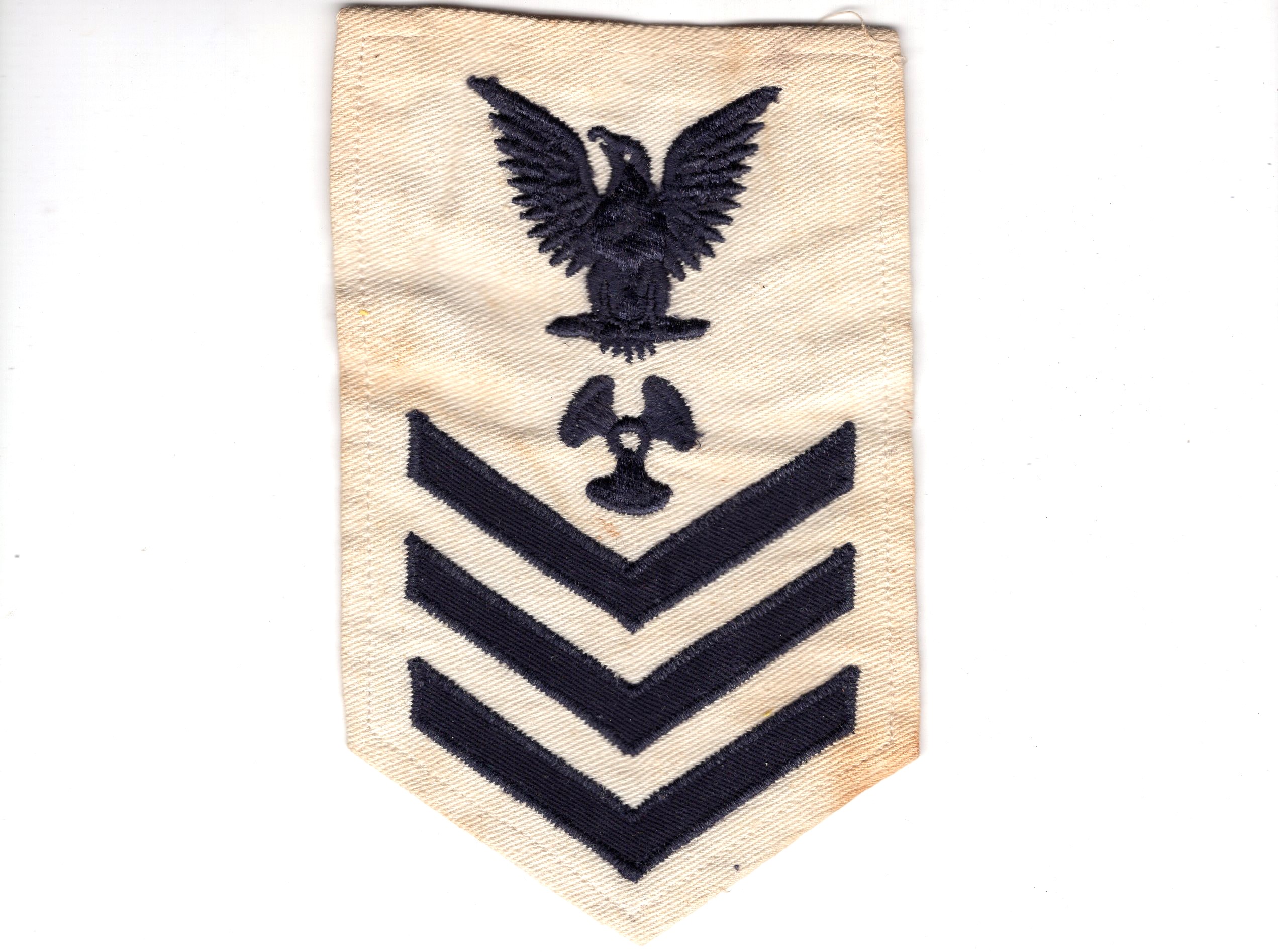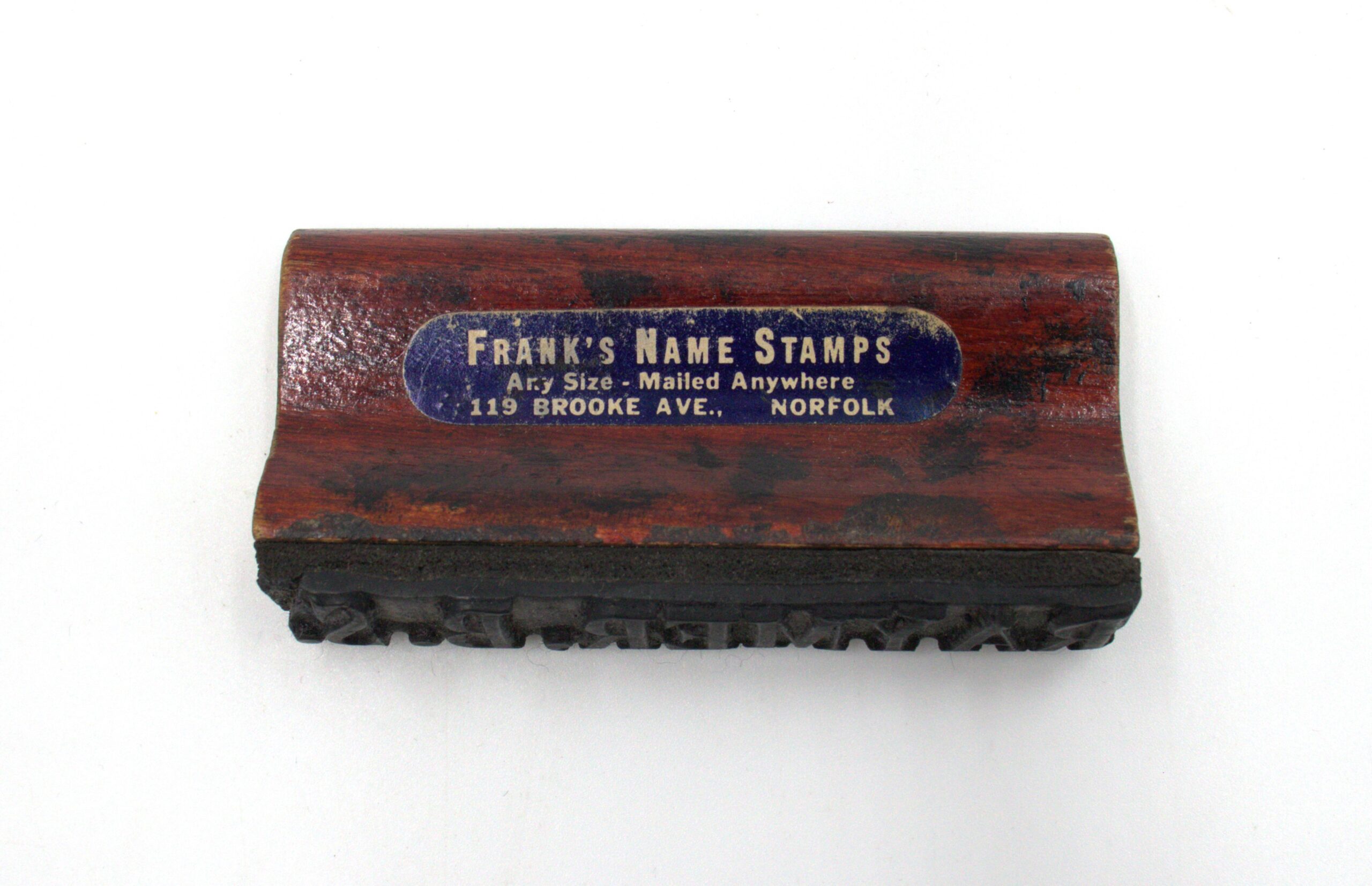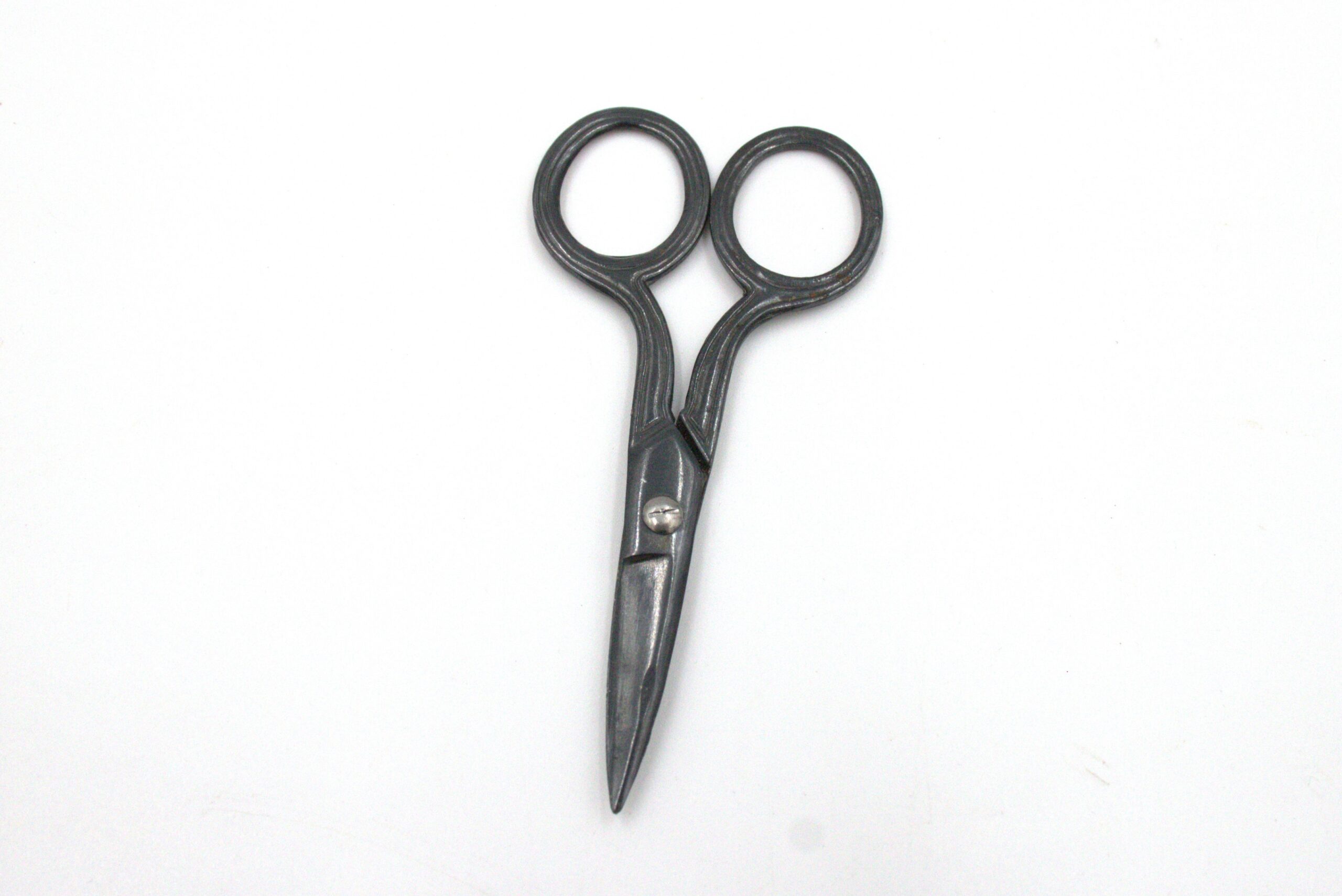Artifact Highlight: Battleship New York Collections
Posted by James Burke on August 28, 2024

Battleship New York was the sister ship of Battleship Texas and served alongside her during the First and Second World War. USS New York (BB-34) entered service on May 15, 1914, two months after Battleship Texas. Despite being the lead ship of the class, Brooklyn Navy Yard finished her construction later than Newport News Shipbuilding did on Texas. Like Texas, New York patrolled the North Sea and saw the Imperial German Navy surrender at Firth of Forth. During the interwar period, New York acted as a set piece for training exercises known as Fleet Problems from 1923-1939. During World War II, New York earned three Battle Stars for the bombardment of French Morocco, Iwo Jima, and Okinawa, where she served alongside Texas. She was decommissioned on August 29, 1946, one year and ten months before Texas. New York’s fate saw her as a test ship in the Bikini Atoll nuclear bomb tests. Afterwords, she was sunk as a target ship in Hawaii on July 8, 1948, just 79 days after the US Navy decommissioned Battleship Texas.
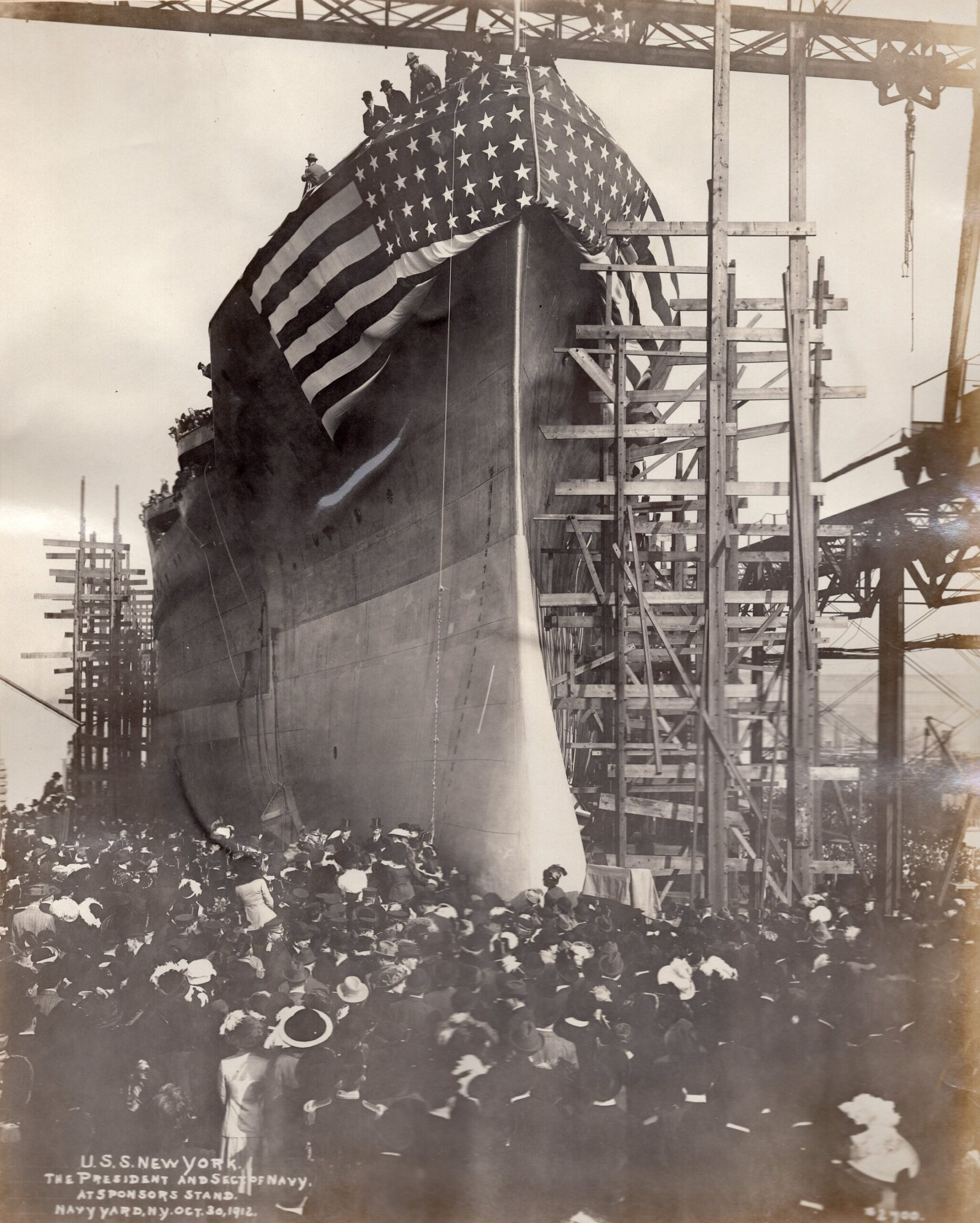
Battleship Texas Foundation’s mission is to preserve the history of the Battleship Texas, and the history of her sister ship. Her service is as long and storied as Texas, and it is the job of the Foundation to maintain those articles of Battleship New York’s history just as we do for Battleship Texas. Items related to the history and service of Battleship New York spread across four collections, and consist of dozens of items from the beginning of her service to the end.
Battleship Texas Foundation’s USS New York collections can be viewed here.
The most prominent item of Battleship New York in our collection is one of the ship’s many Cruise Books. Crew members of ships often put together a cruise book filled with photos of the deployment or cruise the ship undertook, a tradition that began in the late nineteenth century and is still practiced today. Cruise books record the events of the ship’s deployment, the later ones including photos. After World War II ended, the Battleship New York’s crew made a cruise book of their experiences on the ship’s final deployment of the war. The book begins during her last cruise of WWII, through the Japanese surrender and Operation Magic Capet, ending with the departure from New York City for Operation Crossroads at Bikini Atoll. Battleship Texas also had a cruise book after the conclusion of World War II, but hers was not as detailed as the one made by the crew of New York. The cover’s intricate design of large print “U.S.S. NEW YORK BB-34” and the ship’s port side profile warrants careful treatment, though the book is fairly durable and meant for considerable handling. The cruise book is stored in an archive box layered with paper for protection. While part of a bigger group of items, its larger and bulkier size calls for alternative storage from the rest of the collection.
Another Battleship New York item is the Ship’s Regulations book. While Battleship New York looks identical to Battleship Texas and shares a design, even ships of the same class have differences. The Ship’s Regulations book is specific to each ship at a specific time, and thus could not have been used by the crew of Texas at any point in the two ships’ histories. This Ship’s Regulation book was issued on May 31, 1944. Because the entire book is paper, gloves are not recommended since the oils on the palm are significantly less damaging to the material than either nitrile or white gloves. Wearing any kind of gloves introduces a lack of tactility that could cause a tear or scuff on the paper that would have otherwise been avoided by bare hands. Paper items can and should always be handled by clean dry hands. When handling paper objects, sensitivity to the material is paramount. Like the Cruise Book, it is stored in the same archive box with tissue paper, though storage could later be transferred to a folder in an archive file box of the same collection.
Photographs make up the largest portion of Battleship New York items within collections, currently numbering forty-nine and ranging from her launch in 1912 through her service in WWII. Gloves should be worn, but only specific kinds. Latex gloves can stick to, and damage photograph surfaces and white gloves pick up dirt and should not be used for day-to-day handling of most artifacts. Anyone handling old photographs, whether a print or postcard, should wear nitrile gloves. Photographs are typically printed on thicker postcards or are otherwise made from more durable material than the sheets of paper orders are printed on, or letters written. Even if less prone to tearing, the faces of the photos are the most vulnerable to weathering and are the first part to see damages, especially if the handler is either wearing the wrong gloves or none at all. Fingerprints are especially damaging to photo faces, making protection of the face the most important aspect of their storage. All photographs are placed in polyester archive sleeves, which are then put in acid free folders, and sorted into archive boxes according to the collection they originate from.
The crew of New York did not spend every moment in general quarters; even with their duties, sailors still had a considerable amount of down time on board. Apart from keeping the ship in working order, each sailor had to keep themselves and their uniform in presentable condition. Sewing material was common on any US warship, although it was never a standardized article of their gear and was made by numerous vendors. One donated collection contains the sewing kit of Bert S. Raymer, who joined the crew of New York in 1940. Raymer’s kit includes scissors, thread, patches, spare cloth, many buttons, and several smaller objects. Handling of each item in the sewing kit is just as varied. Metal materials, such as the scissors and needles, should be handled with nitrile gloves to avoid corrosion. Anyone handling the small paper packets should have clean dry hands, the same as when handling the Ship’s Regulations book. Patches, pieces of cloth, and spools of thread should also be handled with gloves to avoid any more degradation to the material. Storage of each piece is likewise varied. Most of the pieces, from the needle and snap fastener packs to uniform patches and spare cloth can fit in archival folders due to their relatively flat shape. Items that are more dimensional, such as Raymer’s personalized stamp, are stored in archive box compartments. Similar items are stored together, such as the buttons, spools of thread, and larger instruments. Separation ensures the items do not damage or corrode each other.
Generous donors give new and interesting artifacts to Battleship Texas Foundation regularly. While most items in our collection relate to Battleship Texas, the history of Battleship New York and her crew remains a vital component of the Foundation’s mission. The Battleship Texas Foundation is actively collecting historic items, photographs, and documents related to Battleship Texas (BB-35), Battleship New York (BB-34), or the other commissioned ships named USS Texas (SSN-775, CGN-39, and the first USS Texas commissioned in 1895). If you have an item that makes you say, “It belongs in a museum!” please email us at [email protected] with photos and any relevant information. Our staff is working diligently to collect, accession, and archive historical items of the Last Dreadnought.

James Burke is a History PhD student at the University of Houston and has worked as curatorial staff with Battleship Texas since 2020.

